This guide to all the must-visit places in Sicily will have you dreaming of a trip to the largest and perhaps most celebrated island in Italy.
Sicily, the largest of Italy’s islands, is a unique destination unlike anywhere on the Italian mainland. Located southwest of the southern point of Italy, Sicily is home to its own distinct history, culture, and cuisine.
Must-visit places in Sicily include areas of stunning natural beauty, from mighty volcanoes to pristine beaches, as well as elegant cities and charming towns.
There is a strong cultural identity in Sicily, influenced by the legacy of the Greeks, Romans, Arabs, Normans, and Spanish, among others. Although Italian is the official language in Sicily, distinctive Sicilian dialects are more commonly spoken, especially in smaller towns and villages.
The cuisine of Sicily is also unique, giving the world dishes like arancini, pasta alla norma, and cannoli.
Sicily gained worldwide fame and notoriety as the backdrop of several scenes from the classic 1972 mob film The Godfather, while more recently, its popularity as a vacation destination has skyrocketed thanks to the hit television show The White Lotus.
Although Sicily is an island, it’s quite large; almost 10,000 square miles. You can easily spend a full week or longer exploring the highlights of Sicily. Let’s take a look at all the must-visit places in Sicily you should add to your itinerary, from historic cities to resort towns to volcanic islands and more.
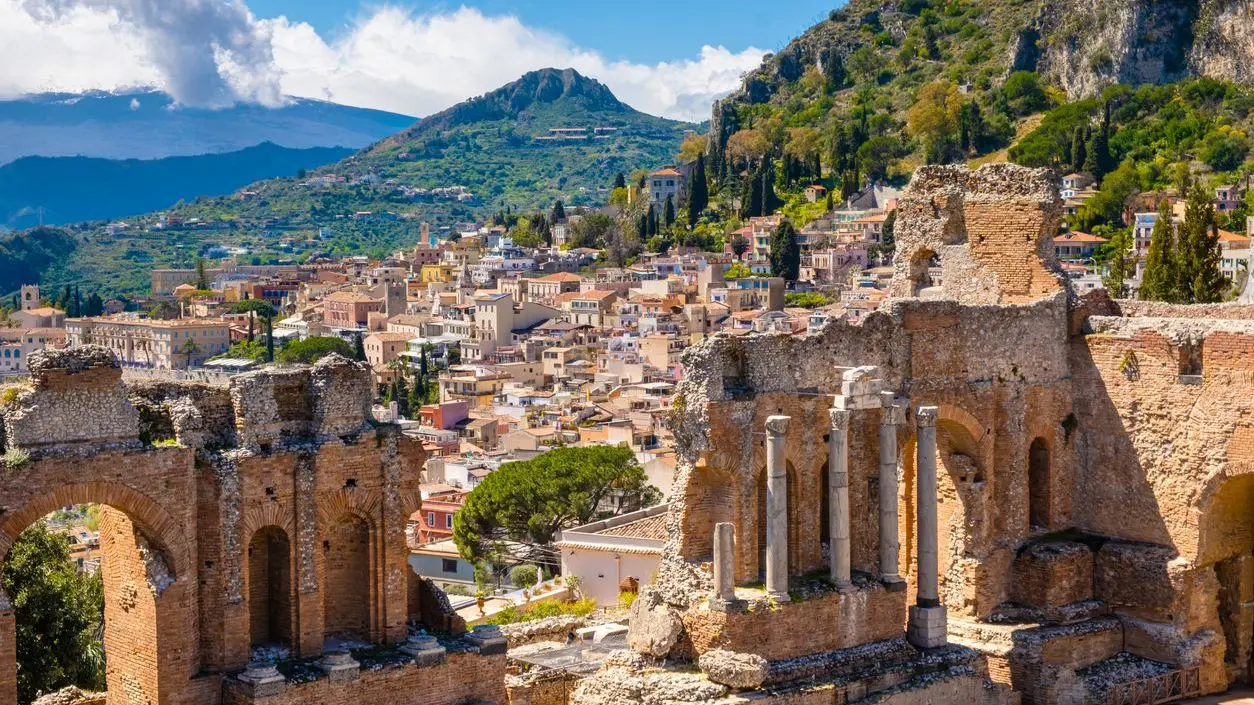
Jump to a section of this article
11 Must-Visit Places in Sicily
Best Places To Visit in North & Northwest Sicily
Northern Sicily is the perfect place to begin your journey around the island. Palermo, the capital of Sicily, is home to one of the island’s largest international airports (the other being in Catania on the eastern coast of Sicily).
The northwestern part of the island is also known for its beautiful beaches, especially around the coastal town of Cefalu.
1. Palermo
Palermo is one of the top city destinations in Sicily. This stately capital is the largest city in Sicily, and it’s well worth visiting for a couple of days, offering a great taste of history and culture. Like many Sicilian cities, it can be a little rough around the edges, but the vibrant spirit of Palermo still shines through the grittiness.
One of the top things to do in Palermo is visiting the Norman Palace, an ancient royal residence that dates back to Arab rule in Sicily, and was later reconstructed during Norman rule in 1072. The palace is home to the Palatine Chapel, a stunning and opulent chapel built in a mixture of Arab, Norman, and Byzantine styles.
Other highlights of Palermo include the massive Palermo Cathedral, the incredible Teatro Massimo Vittorio Emanuele opera house, and Villa Bonnano, a lovely public garden that offers a tranquil oasis in the midst of the bustling city.
Palermo is an excellent destination for foodies, and you can try many of Sicily’s iconic dishes in restaurants around the city.
You also shouldn’t miss Palermo’s famous street markets, Ballaro and Vucciria being two of the most popular. These markets sell everything from fresh produce to spices to street food, giving you an authentic taste of Palermo.
If you’re looking for beaches, there are some great options less than thirty minutes from the city center, including Mondella and Sferracavallo, which is also known for its fresh, delicious seafood.
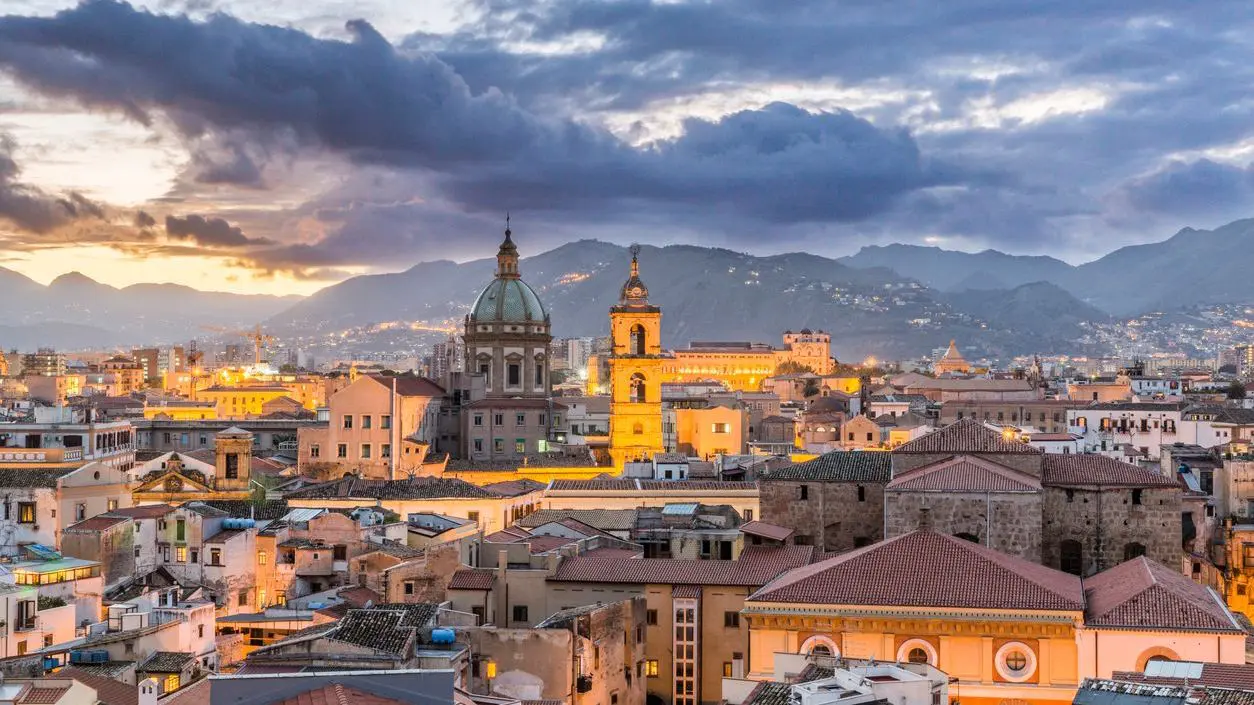
2. Cefalù
Our list of the must-visit places in Sicily, especially northern Sicily, continues with Cefalu. Located about one hour from Palermo, this charming town is known as a popular seaside escape. You can easily visit on a day trip from Palermo, or spend several days here if you want to relax and enjoy the beach.
The heart of the town is centered around the Cathedral of Cefalu, an old Norman church filled with Byzantine mosaics. Outside the cathedral, Piazza Duomo is a lively square filled with restaurants, and surrounding the square is Cefalu’s medieval Old Town, where you’ll find more shops, cafés, and restaurants.
Of course, the real highlight of Cefalu is its beaches. The main public beach is a long, sandy strip where you can sprawl out with your own towel and umbrella, or rent a sunbed from one of the beach clubs.
Kalura and Mazzaforno are two other great beaches in Cefalu with fewer crowds, although each is a short drive from the main town. There are plenty of beachfront bars and restaurants overlooking the water where you can relax and enjoy a drink or a meal.
Aside from exploring the Old Town and hitting the beach, you can also hike up La Rocca, the giant rocky promontory situated directly behind Cefalu.
The hike to the top takes approximately an hour and a half, and offers spectacular views looking down on the town and out to sea. You can also explore the ruins of a medieval castle overlooking Cefalu.
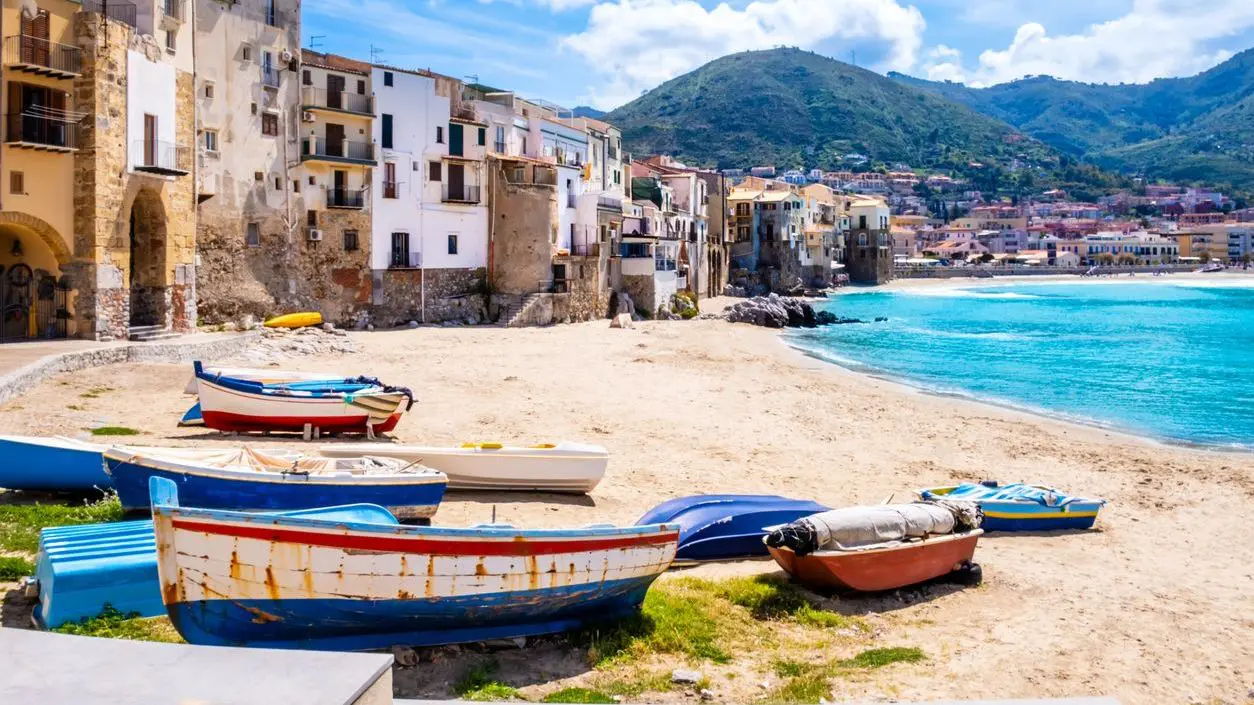
Best Places To Visit in South & Southeast Sicily
Southern and southeastern Sicily is one of the best areas to explore, especially if you’re interested in history and architecture. From beautiful Baroque towns and cities to ancient Greek temples in the countryside, there’s plenty to see in this part of Sicily.
If you’re planning a trip focused on southern and southeastern Sicily, Catania is the best airport to fly into.
3. Valley of The Temples & Agrigento
One of the most important archaeological sites in Sicily is the Valley of the Temples in Agrigento. The city of Agrigento, known as Akragas in the classical period, was one of the leading Ancient Greek cities in Sicily.
Surrounding the city, you can discover the Valley of the Temples, a UNESCO World Heritage Site with some of the best-preserved Greek ruins outside of Greece.
Dating back to the fifth century BCE, the temples were built at a time when Akragas was one of the most powerful Greek colonies. Temples dedicated to various Greek gods and goddesses were constructed, many of which are still intact today.
The Temple of Concordia is the largest and best-preserved in the valley, while the Temple of Juno and Temple of Heracles are partially intact and still very impressive. In addition to temples, the archaeological park also includes necropolises, ancient city walls, ruins of houses and other structures, as well as a museum.
You can easily spend a full day exploring the Valley of the Temples. Don’t forget to stay until sunset to see the ruins of the temples and the surrounding landscapes bathed in golden light, illuminating the ancient stone columns and facades.
When visiting the Valley of the Temples, you can use the nearby city of Agrigento as a base for an overnight trip. Agrigento is a great destination to spend some time exploring its narrow streets, historic churches, and hole-in-the-wall restaurants.
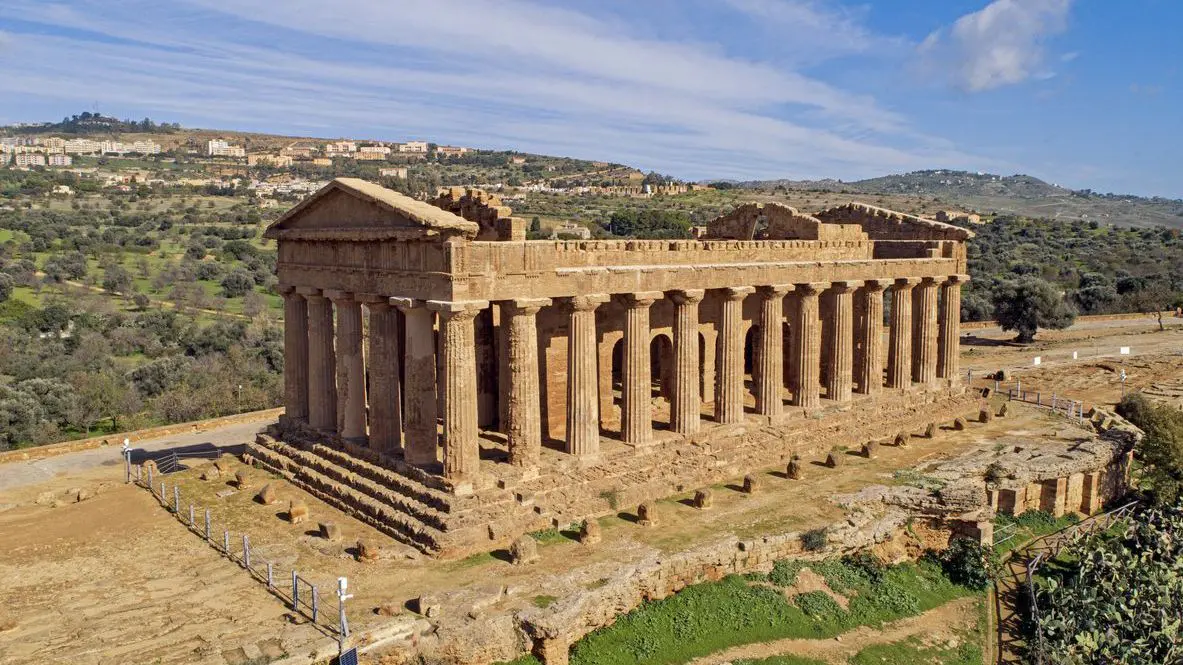
4. Ragusa
Ragusa is one of the most picturesque cities in Sicily. Located on a hilltop in the southeastern part of the island, this historic city suffered a devastating earthquake in 1693. Much of Ragusa was destroyed, and the city was rebuilt in two distinct parts, Ragusa Superiore (the new upper town) and Ragusa Ibla (the old lower town).
Ragusa Ibla is a highlight for most visitors, with its winding cobblestone streets and ornate Baroque churches. The centerpiece is Duomo di San Giorgio, a stunning Baroque cathedral with an impressive staircase leading up to its entrance.
The surrounding Piazza Duomo is a lively area filled with restaurants and cafés where you can relax and take in the best views.
Meanwhile, Ragusa Superiore offers more of a modern city feeling, although it’s still worth visiting, especially for the scenic views looking down on Ragusa Ibla. You can get to Ragusa Superiore from Ragusa Ibla via a quick ten-minute bus ride or by walking.
Since it’s a pretty steep walk involving a lot of stairs, it’s a good idea to take the bus up to Ragusa Superiore and then walk back down to Ragusa Ibla.
You can easily visit Ragusa on a day trip, or base yourself here for a couple of nights if you want to slow down and enjoy the Sicilian pace of life in a city that isn’t overly touristy.
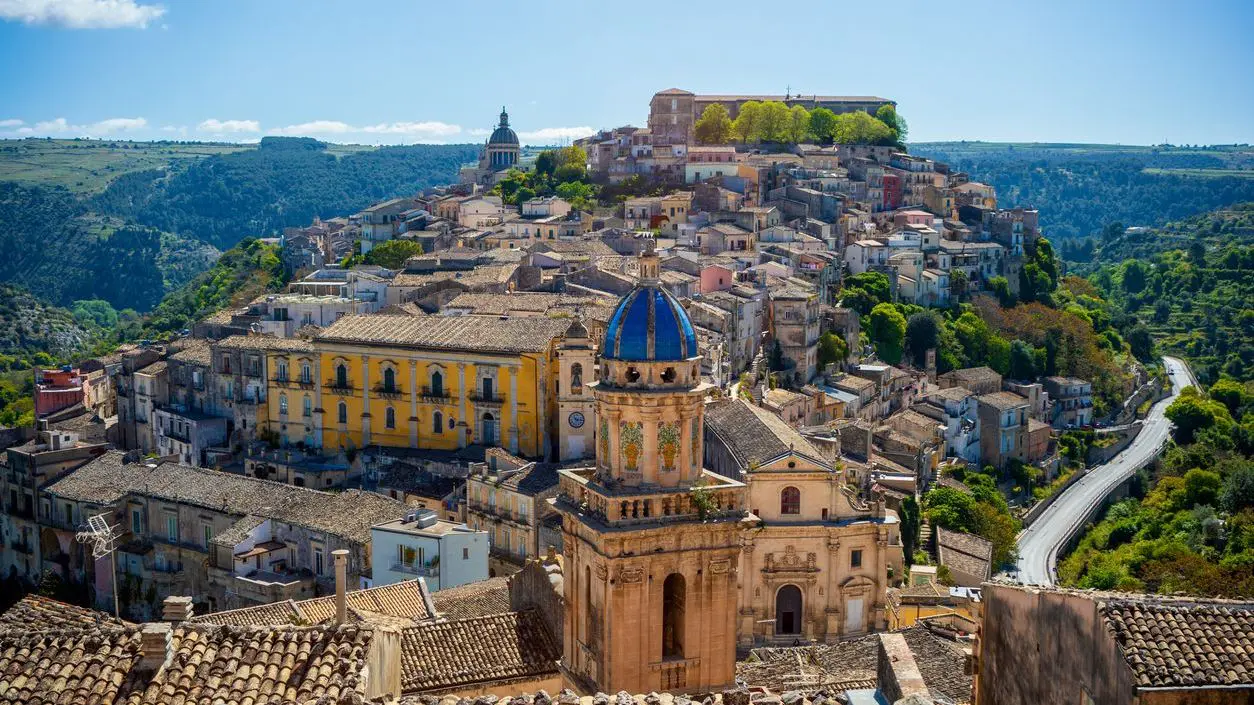
5. Modica
Just a thirty-minute drive from Ragusa, Modica is another must-visit destination in southern Sicily. This captivating city is a Baroque gem, also rebuilt after the 1693 earthquake.
Similar to Ragusa, Modica is also divided into two sections: Modica Alta (Upper Modica) and Modica Bassa (Lower Modica). Each area has its own character and attractions.
Like most Sicilian cities, Modica is home to some beautiful churches, including the Duomo di San Giorgio, which shares a name with the similar Baroque cathedral in Ragusa. While the interior of this church is beautiful, one of the highlights here is climbing the bell tower, which offers incredible views over Modica.
You can find other scenic viewpoints around the city, including the Belvedere Pizzo, which provides a sweeping panorama of the tightly packed historic buildings of Modica.
By far the most unique thing about Modica is its chocolate. Introduced by the Spanish during their rule in Sicily, who brought the tradition to Europe from the Aztecs in Mexico, Modica’s chocolate is made using an ancient recipe that gives it a distinctive, grainy texture.
You can sample this delicious treat in numerous chocolate shops around the beautiful town, with one of the most famous being Antica Dolceria Bonajuto.
Much like Ragusa, you can easily visit Modica on a day trip, or choose to spend the night here if you want to linger in this small town and explore more of the local shops and restaurants.
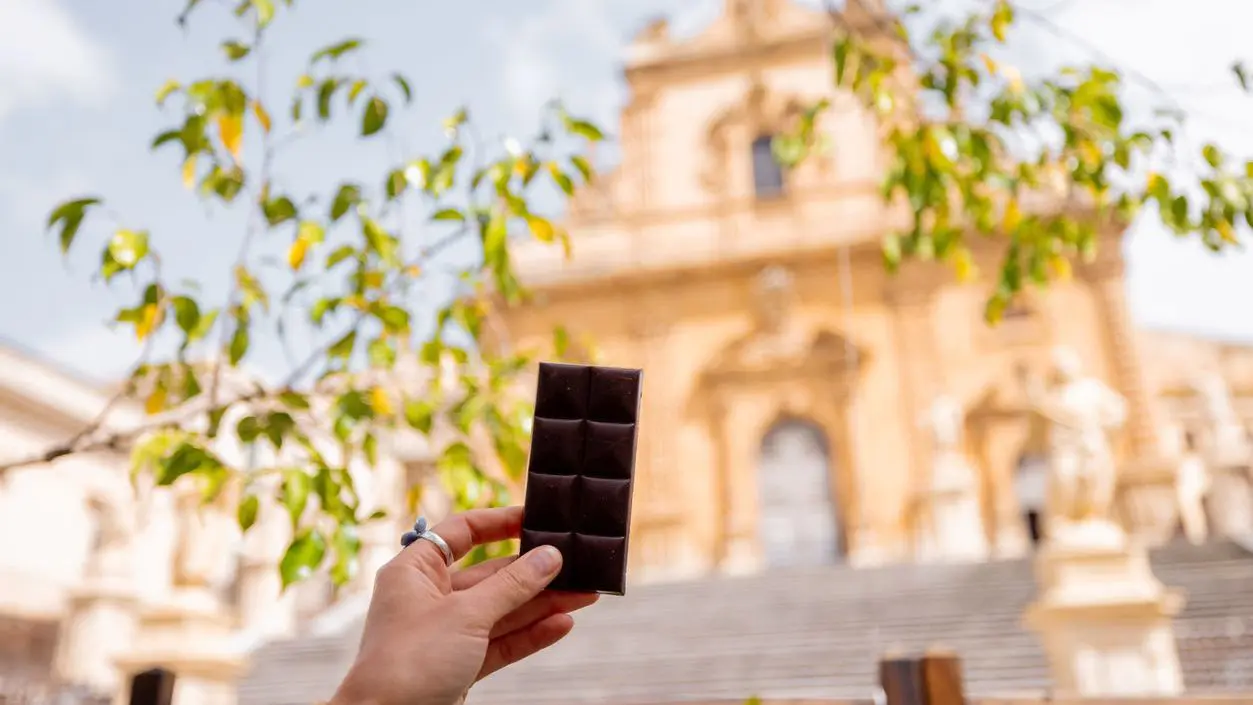
6. Noto
Often considered the crown jewel of Sicily’s Baroque towns, Noto is another destination in southern Sicily known for its beautiful architecture and centuries of history. Like Ragusa and Modica, it was rebuilt in elegant Baroque style after the devastating earthquake of 1693.
At the center of the city, the Cathedral of San Nicolo is exemplary of Sicilian Baroque architecture. Across the street from this beautiful church, the Palazzo Ducezio is another site you won’t want to miss. This Baroque palace now serves as Noto’s City Hall, and it’s open to visitors.
Strolling along the Corso Vittorio Emanuele, Noto’s main pedestrian thoroughfare, will allow you to see even more gorgeous Baroque architecture.
There are also plenty of restaurants and sidewalk cafés along the street, offering a place to stop and relax for a while. On a particularly hot day, you can order a granita, a delicious frozen dessert that’s popular all throughout Sicily.
If you happen to be visiting Noto in May, you can enjoy one of the city’s most unique traditions: the Infiorata di Noto. This festival involves turning a historic street, the Via Corrado Nicolaci, into an elaborate floral display, carpeted with intricate flowered designs.
If you’re looking for beaches, you can also find those near Noto. Although the historic city center is not directly on the coast, the Lido di Noto area is less than twenty minutes away, and you can enjoy sandy beaches and clear blue waters perfect for swimming.
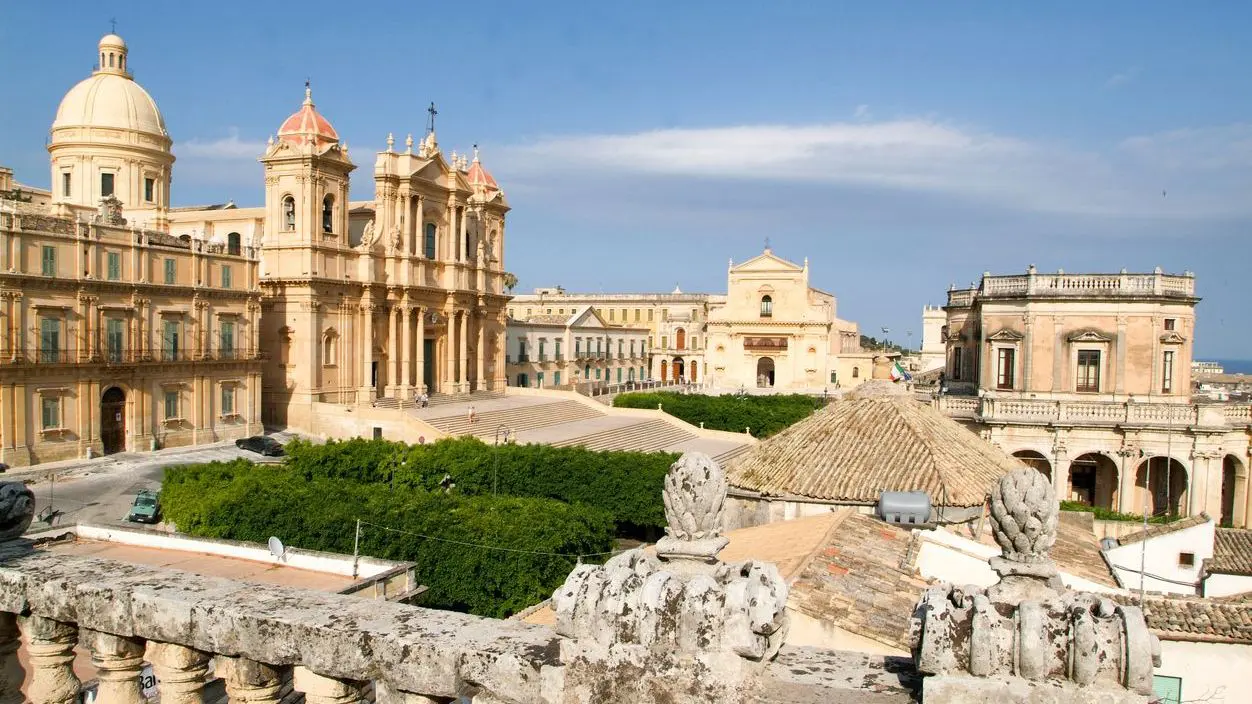
7. Siracusa & The Island of Ortigia
While you’re in southeastern Sicily, another destination you can’t miss is Siracusa and Ortigia Island. Siracusa is the fourth-largest city in Sicily, and one of the most historically significant.
In Ancient Greece, Siracusa (or Syracuse) was a powerful city-state, home to famous personalities, like the mathematician Archimedes.
Today, it’s a fascinating mix of ancient ruins, Baroque elegance, and seaside charm. One of the most important sites in Siracusa is the Archaeological Park of Neapolis, where you can see the impressive Greek Theater, which is still used for performances and events today, and the ruins of the Roman Theater.
The oldest part of Siracusa is the Island of Ortigia, which is connected to the mainland by several bridges. This is the ancient heart of the city, filled with narrow alleyways, elegant piazzas, and waterfront promenades.
It’s a compact and walkable area where you can discover historic churches, lively markets, charming boutiques, and seaside restaurants.
It’s especially magical at sunset, when the streets come alive with people dining al fresco and enjoying sunset views from the western promenades of the island.

Best Places To Visit in East & Northeast Sicily
8. Catania
Catania is a great place to start or end your trip to Sicily. It’s the second-largest city in Sicily after Palermo, home to the island’s busiest international airport.
It’s worth spending a couple of days in this bustling city, which is so much more than just a gateway to Sicily. Catania is a gritty, vibrant city that offers a real look at Sicilian life.
Located at the base of Mt. Etna, Catania was nearly destroyed and later rebuilt after an eruption in the 17th century, showing the resilience of the city. Catania is known for its beautiful Baroque architecture, which, although crumbling in some places, still shines with centuries-old grandeur.
One of the best places to visit in Catania is the Piazza del Duomo, where you can see the impressive Baroque Cathedral of Saint Agata.
Just around the corner, the Fish Market is a fascinating place to visit for a slice of Sicilian life. This bustling market takes place every morning except Sunday, with fresh local fish and other seafood on display.
Some other interesting places to check out in Catania include the Teatro Massimo Bellini, a 19th-century opera house, the Monastery of San Nicolo l’Arena, a historic monastery offering tours, and the Giardino Bellini, a sprawling public park that offers a respite from the hectic city.
For those interested in ancient history, Catania has ruins you can visit. There are two Roman theaters in the city, with the most impressive one being located near the Piazza del Duomo.
Built over a pre-existing Ancient Greek structure, the theater dates back to the fourth or fifth century BCE. Another partially excavated Roman theater is located slightly to the north.

9. Mount Etna & Its Surroundings
No trip to Sicily is complete without experiencing Mt. Etna, Europe’s tallest and most active volcano. Rising over 11,000 feet above sea level, you can see this volcano looming from all around eastern Sicily. Not only does it dominate the landscape, but the volcano has also shaped the geography and history of the island.
According to Ancient Greek mythology, the deadly monster Typhon was said to be trapped under Mt. Etna by the god Zeus, causing volcanic activity and eruptions. Visitors can safely get up close and personal with Mt. Etna in several different ways.
Hiking tours are a popular way to explore Mt. Etna, with trails through lava fields, volcanic craters, and unique lunar-like landscapes.
If you’re looking for a less strenuous option, you can also take a driving tour of Mt. Etna in an off-road vehicle. There’s even a cable car, the Funivia dell’Etna, which will take you up to 8,200 feet on the volcano.
The soil around Mt. Etna is fertile, supporting thriving vineyards and orchards. The Mt. Etna wine region is a popular destination for wine tours, where you can sample Etna Rosso and Etna Bianco, red and white volcanic wines that are made at local wineries.
You can also try fruit grown in Mt. Etna orchards, including sweet apples and tangy blood oranges. Pistachios are also a specialty grown around Mt. Etna, used to flavor many Sicilian desserts.
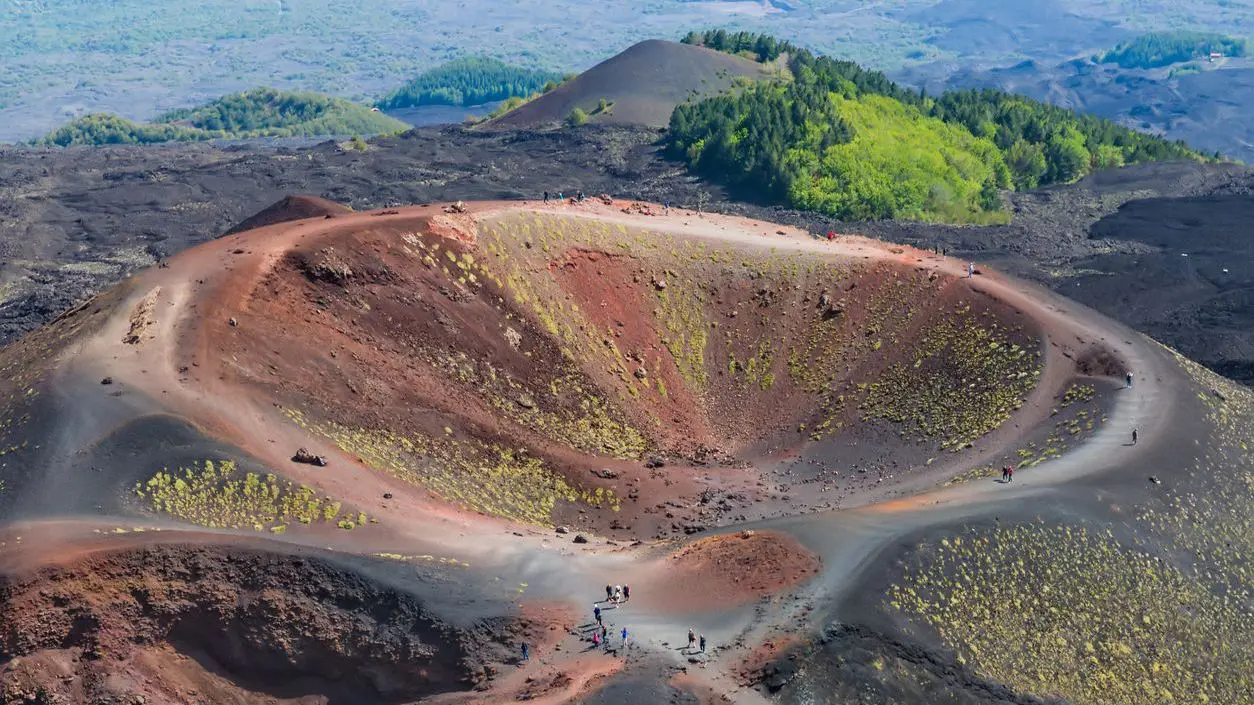
10. Taormina
Taormina is one of the most visited destinations in Sicily. While this coastal resort town has always been a well-known vacation spot, it’s drawn even more crowds thanks to the popularity of the television show The White Lotus, which was filmed at a luxury hotel in Taormina.
Perched high on a cliff above the Ionian Sea, this picturesque and charming town offers the perfect combination of relaxation and exploration.
If you’re looking for beaches, the best spot to check out in Taormina is Isola Bella. This tiny island juts out into the Ionian Sea, connected to the mainland by a narrow land bridge.
The large pebble beach near the island is a popular spot offering both easy access to a public beach and private beach clubs with sunbed rentals and other amenities. The easiest way to get down to the beach from town is by taking the cable car.
Taormina is also a good jumping-off point for exploring the surrounding area, with boat tours being a popular activity for visiting hidden caves and swimming spots along the coast.
In the town, one of the best places to visit is the Greek Theater of Taormina, one of the most scenic ruins in Sicily, thanks to its spectacular views.
Corso Umberto is the main street in Taormina, and this pedestrian thoroughfare meanders for over a mile, lined with restaurants, boutiques, galleries, historic churches, and picture-perfect alleyways.

11. The Aeolian Islands
We’re ending our list of the must-visit places in Sicily with one more incredible destination that you can’t miss: the Aeolian Islands. Located off the northeastern coast of Sicily, this chain of seven main islands of volcanic origin (Lipari, Vulcano, Stromboli, Salina, Panarea, Filicudi, and Alicudi) is well worth a visit.
You could easily spend a week exploring the islands, each of which has its own unique features. Lipari, the largest island, is the main transit hub and has a large, lively town. Vulcano and Stromboli each have active volcanoes you can explore.
Salina is a beautiful island to visit, along with Panarea, which is known as a chic and upscale enclave. Filicudi and Alicudi are the most remote and undeveloped islands if you want to get off the beaten path.
Some of the most popular activities in the Aeolian Islands include hiking Vulcano and Stromboli, taking a boat tour to several different islands, exploring the interior of the volcanic islands by scooter or bicycle, relaxing on the beach, and kayaking or snorkeling in the sea.
Although it’s technically possible to visit some of the Aeolian Islands on a day trip from mainland Sicily, it will feel extremely rushed and involve a very long day of travel. It’s best to spend at least a few days exploring the islands, either using one as a base to visit the others, or moving around and staying on several different islands.
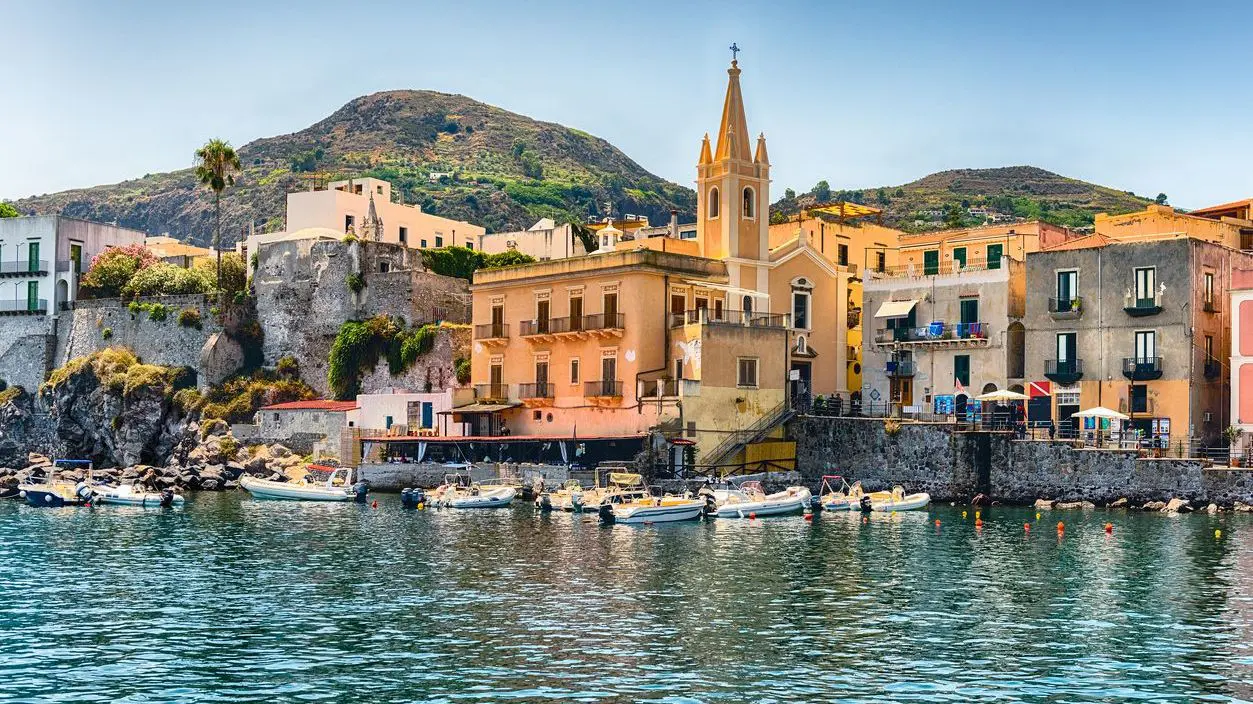
Explore Sicily With The Experts
Here at JayWay Travel, we know Italy quite well. From travel advisors to trip planners to staff on the ground, our Italy expertise shines, and we can guarantee an unforgettable experience in one of Europe’s most beautiful countries.
When it comes to Sicily, we can craft the perfect itinerary for you, according to your travel style. Are you dreaming of a Sicily trip, White Lotus style? Or maybe an overview of the entire island on a best of Sicily private tour?
No matter how you envision your Sicily trip, we’re here to make it the best you could ever imagine. We’re only a phone call or e-mail away!
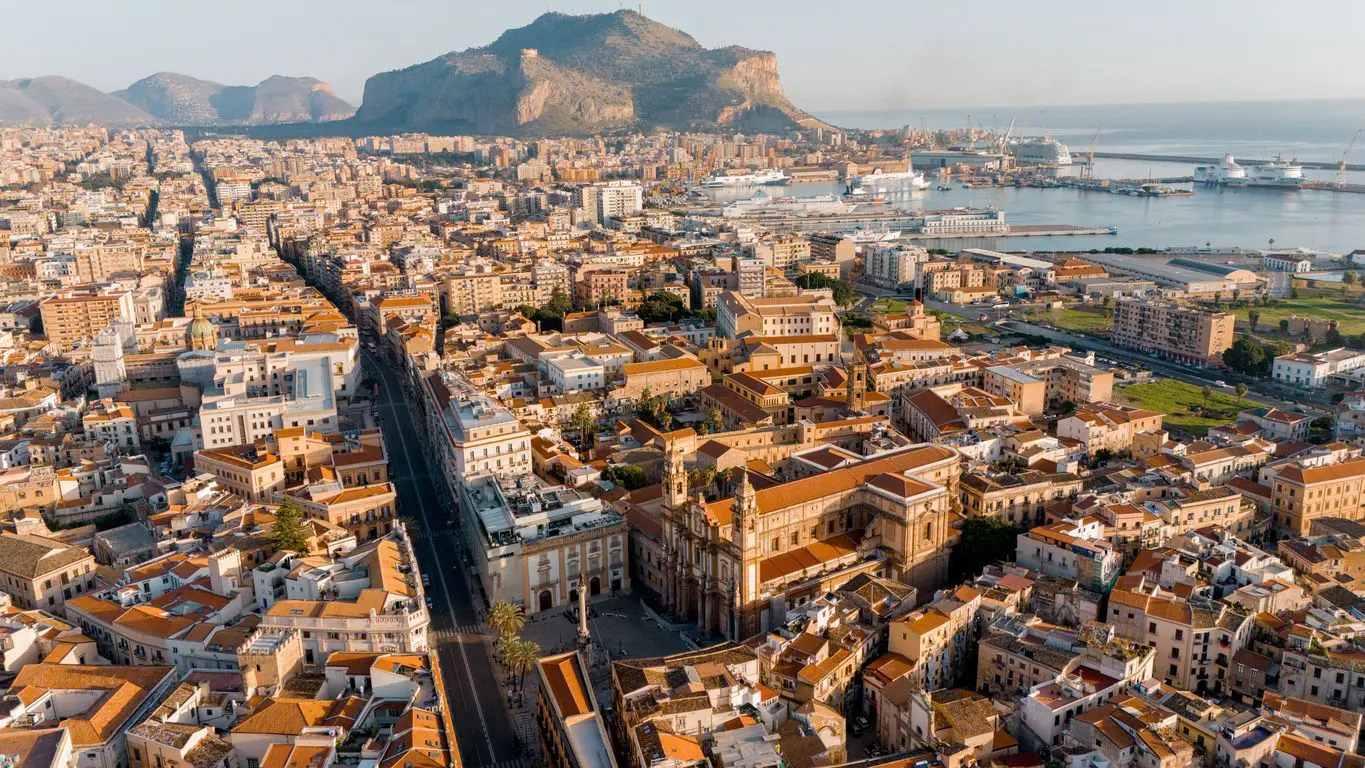
Frequently Asked Questions About Visiting Sicily
1. What is special about Sicily?
Sicily is special for its unparalleled blend of cultures, the result of various civilizations that ruled the island throughout the centuries. From the Ancient Greeks to the Romans, Sicily is dotted with well-preserved ancient ruins.
The island’s gorgeous nature is equally impressive, with volcanic landscapes and spectacular beaches competing for your attention. Sicily’s local cuisine isn’t to be overlooked either, and the same goes for the island’s diverse architecture, especially its dreamy Baroque towns.
2. What is the best time to visit Sicily?
The summer months are ideal for beach lovers, but spring and autumn offer milder weather, fewer crowds, and more comfortable access to Sicily’s main tourist attractions. Winter is also perfect for sightseeing and exploring the area’s sun-drenched archeological sites without the excessive heat that summer can bring.
3. What are the best things to see in Sicily?
From the volcanic magnificence of Mount Etna to the sparkling turquoise water of the island’s beaches, Sicily has something for everyone.
Don’t miss the Greek Theater in Taormina, the spectacular Valle dei Templi and its wonders, the Noto Cathedral, and the Cappella Palatina. Exploring Sicily’s several Baroque towns is also a great option, especially for culture lovers.
4. What are the best beaches in Sicily?
Some of the most famous beaches in Sicily include San Vito lo Capo, the white cliffs of Scala dei Turchi on the south coast, and hidden gems on the west coast. A boat trip is a great way to discover secluded coves with breathtaking views.
5. What historic centers should I not miss?
The historic center of Palermo, with the Cappella Palatina, is stunning. The historic center of Catania, which was rebuilt after major volcanic eruptions, is also a favorite place. The quaint town of Piazza Armerina and its mosaics, and the Noto Cathedral in the Baroque dream that is Noto showcase the island’s rich history.
6. Are there main attractions for nature lovers?
Definitely. You can hike Mount Etna, one of the must-visit places in Sicily, on a guided tour, explore the rocky promontory of Capo Passero, or wander among the gorgeous olive groves that dot Sicily’s stunning countryside.
Nature lovers will also enjoy nature reserves along the south coast and amazing views from Sicily’s hills.
7. What are the best things to eat in Sicily?
Some of the best things to eat in Sicily include popular dishes and desserts, like Arancini, traditional fried rice balls, Pasta alla Norma, with tomato sauce, fried eggplant, and ricotta cheese, and Cannoli, delicious sweet ricotta-filled pastries.

Born and raised in Athens, Maria’s passionate about travel and storytelling, a combination that makes her ideal for her role as our content manager.